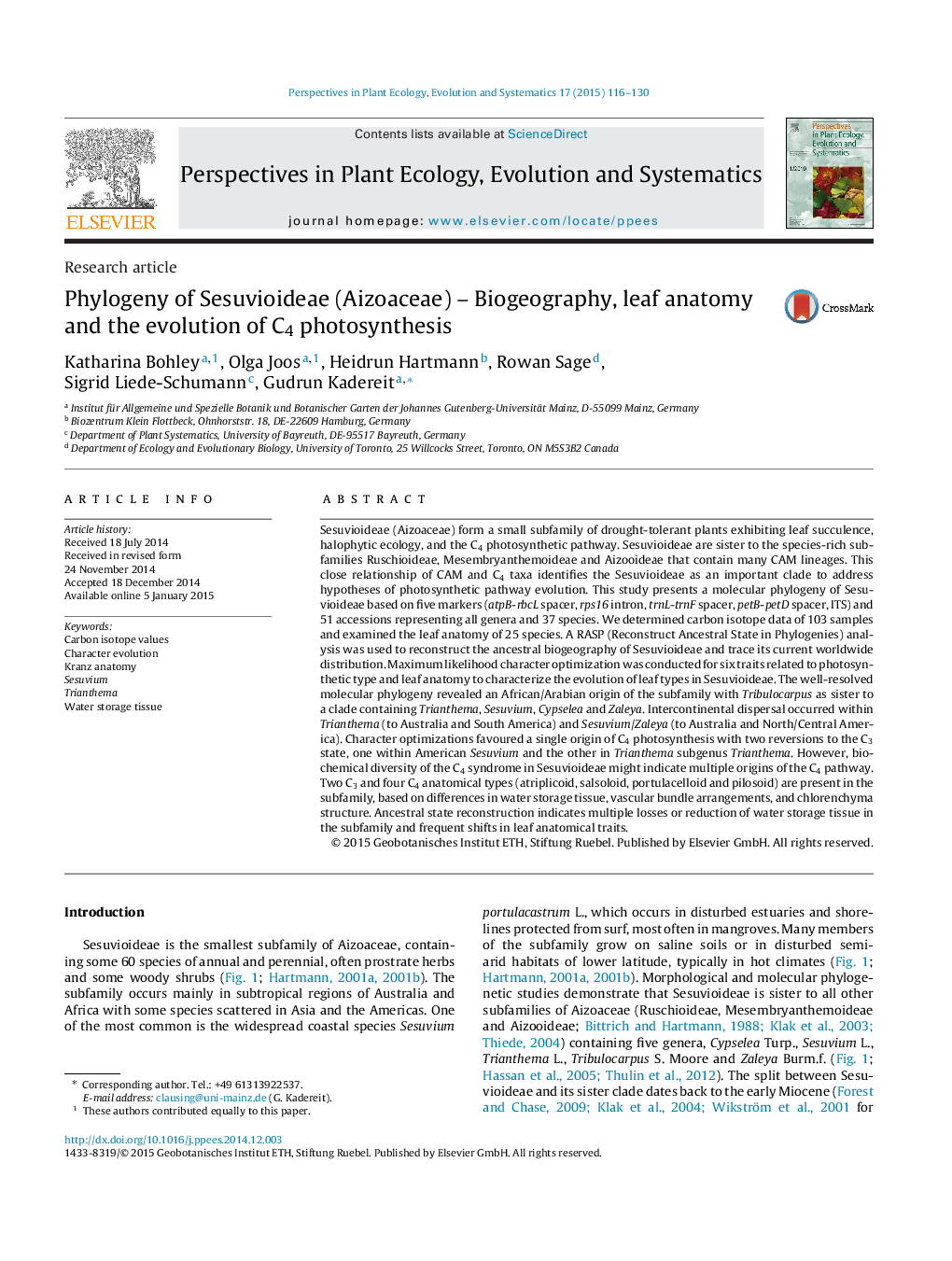| Article ID | Journal | Published Year | Pages | File Type |
|---|---|---|---|---|
| 4400990 | Perspectives in Plant Ecology, Evolution and Systematics | 2015 | 15 Pages |
Sesuvioideae (Aizoaceae) form a small subfamily of drought-tolerant plants exhibiting leaf succulence, halophytic ecology, and the C4 photosynthetic pathway. Sesuvioideae are sister to the species-rich subfamilies Ruschioideae, Mesembryanthemoideae and Aizooideae that contain many CAM lineages. This close relationship of CAM and C4 taxa identifies the Sesuvioideae as an important clade to address hypotheses of photosynthetic pathway evolution. This study presents a molecular phylogeny of Sesuvioideae based on five markers (atpB-rbcL spacer, rps16 intron, trnL-trnF spacer, petB-petD spacer, ITS) and 51 accessions representing all genera and 37 species. We determined carbon isotope data of 103 samples and examined the leaf anatomy of 25 species. A RASP (Reconstruct Ancestral State in Phylogenies) analysis was used to reconstruct the ancestral biogeography of Sesuvioideae and trace its current worldwide distribution. Maximum likelihood character optimization was conducted for six traits related to photosynthetic type and leaf anatomy to characterize the evolution of leaf types in Sesuvioideae. The well-resolved molecular phylogeny revealed an African/Arabian origin of the subfamily with Tribulocarpus as sister to a clade containing Trianthema, Sesuvium, Cypselea and Zaleya. Intercontinental dispersal occurred within Trianthema (to Australia and South America) and Sesuvium/Zaleya (to Australia and North/Central America). Character optimizations favoured a single origin of C4 photosynthesis with two reversions to the C3 state, one within American Sesuvium and the other in Trianthema subgenus Trianthema. However, biochemical diversity of the C4 syndrome in Sesuvioideae might indicate multiple origins of the C4 pathway. Two C3 and four C4 anatomical types (atriplicoid, salsoloid, portulacelloid and pilosoid) are present in the subfamily, based on differences in water storage tissue, vascular bundle arrangements, and chlorenchyma structure. Ancestral state reconstruction indicates multiple losses or reduction of water storage tissue in the subfamily and frequent shifts in leaf anatomical traits.
